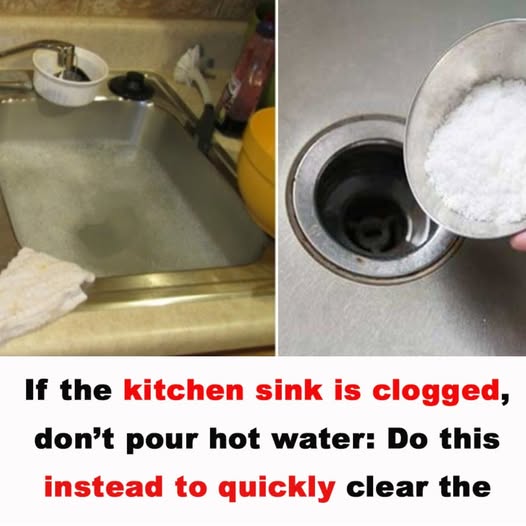ADVERTISEMENT
For tough stains, like those caused by coffee, tea, or food buildup, sprinkle a bit of baking soda over the dampened sink. Baking soda is a natural, non-abrasive cleaner that gently scrubs away stains and odors without scratching your sink’s surface.
- For Stainless Steel Sinks: Baking soda is great for polishing and maintaining the shine of your sink. Use a soft sponge or cloth to gently scrub the surface in circular motions. Rinse with warm water after.
- For Porcelain Sinks: If you have a porcelain sink, you can also use baking soda. Be careful not to scrub too hard to avoid damaging the surface.
4. Use Vinegar for a Sparkling Finish:
White vinegar is an excellent natural disinfectant and can help eliminate lingering odors while giving your sink a shiny finish. After scrubbing with baking soda, spray or pour white vinegar over the sink and let it sit for a couple of minutes. The vinegar will react with the baking soda, bubbling up and loosening any remaining grime.
Once the fizzing stops, wipe the sink clean with a sponge or cloth. For extra shine, rinse the sink with warm water and dry it with a clean towel or microfiber cloth.
5. Clean the Faucet and Drain:
Don’t forget to clean the faucet and drain area. Use an old toothbrush or a small cleaning brush to scrub around the faucet base and handle. Pay special attention to any buildup around the faucet spout and handles. For hard water stains, rub lemon juice onto the affected area and let it sit for a few minutes before wiping it away.
If your drain is clogged or starting to smell, pour a mixture of baking soda and vinegar down the drain. Let it sit for 10-15 minutes, then flush it with hot water. This will help clear minor clogs and remove any odors.
6. Rinse and Dry the Sink:
Once you’ve scrubbed all areas of the sink, rinse everything thoroughly with warm water to remove any soap, baking soda, and vinegar. Dry the sink with a clean towel or microfiber cloth to avoid water spots, especially if you have a stainless steel sink. For a polished finish, you can rub the sink with a dry cloth in circular motions.
7. Disinfect the Sink (Optional):
If you want to ensure that your kitchen sink is fully sanitized, you can use a disinfectant cleaner after cleaning it with soap and baking soda. Simply spray the disinfectant onto the sink and let it sit for the recommended time, usually around 5-10 minutes, then rinse it away.
Additional Tips for Maintaining a Clean Sink:
- Wipe After Every Use: To keep your sink looking fresh, wipe it down after every use. This will help prevent soap scum, water spots, and food buildup from accumulating.
- Keep the Drain Clean: To prevent clogging and bad odors, clean your drain regularly by running hot water through it. Avoid putting grease or large food scraps down the drain.
- Use a Sink Protector: If you’re worried about scratches or dents, consider using a sink protector or mat. It will help keep your sink in good condition while still allowing you to clean it easily.
- Avoid Harsh Scrubbers: Be cautious with abrasive sponges or scrubbers, as they can scratch your sink’s surface, particularly for stainless steel or porcelain sinks. Stick to soft sponges and cloths for the best results.
- Polish Stainless Steel Sinks: After cleaning, you can buff your stainless steel sink with a little olive oil or baby oil to restore its shine and make it look brand new.
How Often Should You Clean Your Kitchen Sink?
The frequency of cleaning your kitchen sink depends on how often you use it, but ideally, you should clean your sink once a day or at least every couple of days. A quick wipe-down after meals can help prevent buildup, while a more thorough cleaning (using dish soap, baking soda, and vinegar) can be done once a week.
Conclusion:
A clean kitchen sink not only looks great, but it also contributes to a healthier, more hygienic kitchen. By following these simple steps and using natural, non-toxic ingredients like dish soap, baking soda, and vinegar, you can easily keep your sink sparkling clean and free of germs. Regular maintenance will help prevent stains, odors, and grime buildup, making your kitchen a more pleasant space to cook and entertain.
With these simple yet effective cleaning techniques, your kitchen sink will always be ready for your next meal prep—clean, shiny, and germ-free!
